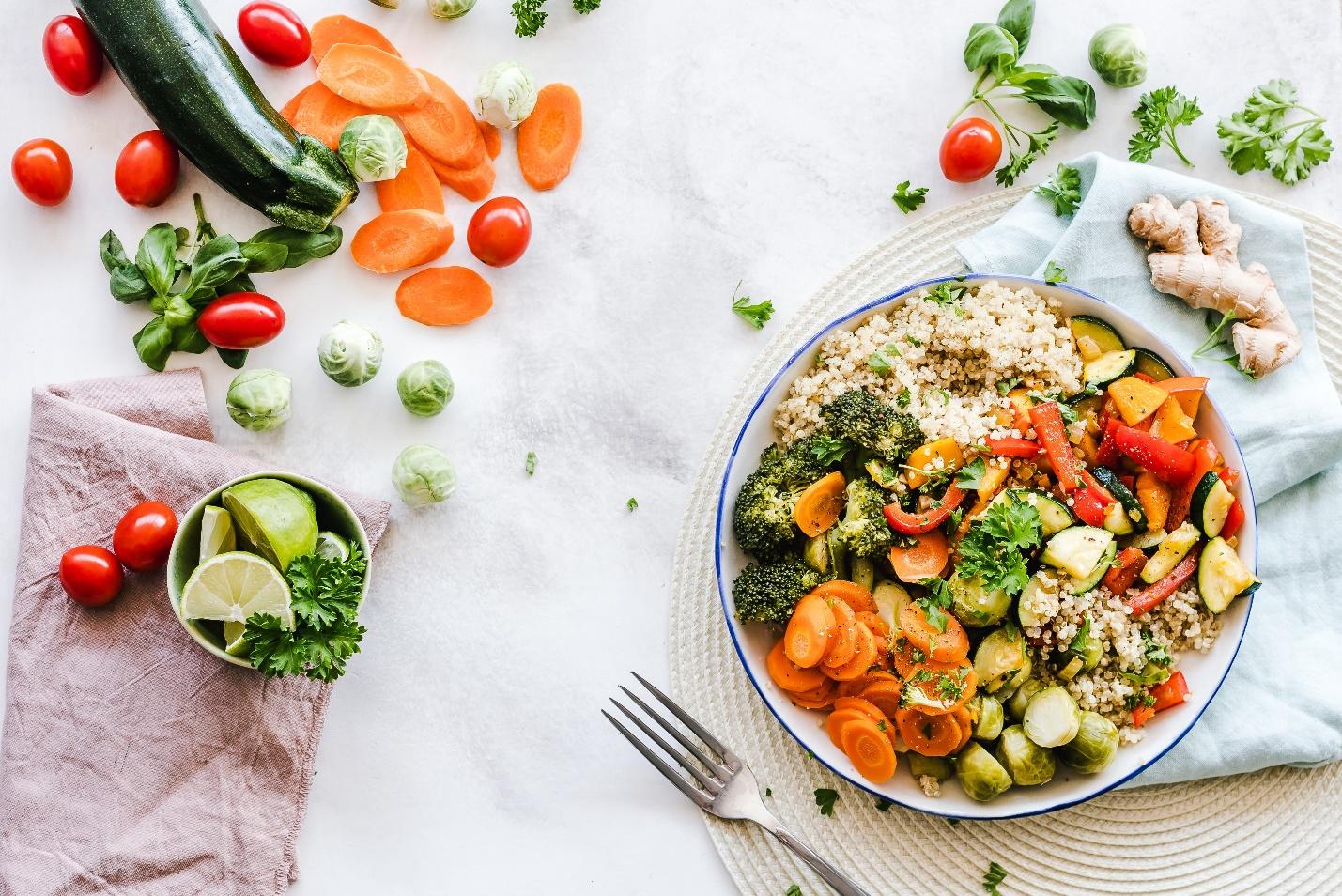A Tasty Future for You and the Planet
A Tasty Future for You and the Planet
By Rick Harrison, Dietetic Intern at Bastyr University
Our future and the future of the planet may have more in common than you think, and much of this revolves around our food choices. Read on to learn more!

Happy National Nutrition Month! This year’s theme is “Fuel for the Future,” but what does that mean exactly? The phrase might prompt us to think about how we will fuel our bodies to stay healthy as we age and also to think about how foods we eat affect the future of the planet. Luckily, foods that fuel our future and the future of the planet are similar!
Eating for Our Future
As dietitians, our thoughts probably go to one of a few places when we think about eating for our future. For example, throughout the world in areas called Blue Zones (areas where individuals consistently live to at least 100 years old), we see dietary patterns that include a variety of plant foods, limited-to-moderate amounts of animal foods, and limited processed foods1:
The Mediterranean Diet
The Japanese Diet (with the practice of eating until only 80% full)
A Vegetarian Diet
The New Nordic Diet
While strict adherence to any of these dietary patterns is beyond what we could expect from our clients or ourselves, it is evident that more plant-based eating is key to a healthier future.
Eating for the Planet’s Future

This is all about sustainability! To eat for the future of the planet, we must think about eating foods that won’t deplete the resources the planet offers. As we know, the planet’s resources are finite. To put it into perspective, consider2:
About 25% of all greenhouse gases come from food production.
50% of all habitable land is used for agriculture.
About 70% of all freshwater withdrawals are used in the production of agriculture.
Producing animal products, especially cow products like beef and dairy, creates more greenhouse gases than producing plant foods.
Some people might jump to the conclusion that eating a strictly vegetarian diet is the only way to observe sustainable eating practices. And while consuming a (mostly) plant-based diet is likely the most environmentally friendly option, it’s only one way that sustainable eating practices can be achieved. We mustmeet people where they are and assist them with their own personal goals, not those that we might want for them.
What Can We Do as Dietitians?
Here are some ideas to get the wheels turning:
Learn about the types of foods that have the greatest environmental impact here.
Help individuals plan a sustainable diet while meeting their nutritional goals. Examples include helping clients establish a “Meatless Monday” meal routine or adding extra servings of fruits or vegetables at each meal.
Educate individuals on how to implement sustainable practices while still consuming animal-based meals. We can help clients plan 80/20 plates where 80% of the plate is plant-based and the other 20% is animal-based. Another idea is to educate clients on accurate protein needs, which would allow most Americans to significantly reduce their meat consumption. It is estimated that Americans consume 80% more protein than needed.3
TRY NEW RECIPES so that we can have delicious recommendations ready to go!
For more resources and to learn more about National Nutrition Month, check out the Academy of Nutrition and Dietetics’ website. So, what do you think about making a change for both yourself and the environment? What is an option that you would consider?
Try This Recipe!
Here is a simple and delicious Vegetarian Chili Recipe for you to try out. Chili is a great place to start if looking to try more plant-based eating. Often, you’ll find hearty satisfaction no matter what. This recipe exemplifies how we can eat mostly plant-based, resulting in sustainable choices and a better future for ourselves and the planet!
Vegetarian Chili
Ingredients:
1 cup dried beans, your preference
2 tbsp olive oil
½ large yellow onion, diced
2 large carrots, diced
2 ribs celery, diced
½ bulb fresh fennel, diced
½ red bell pepper, diced
½ tsp salt
2 tbsp garlic, minced
2 tbsp chili powder
2 tsp cumin
1 ½ tsp smoked paprika
1 tsp oregano
½ tsp cardamom
16 oz silken tofu, blended
½ medium zucchini, diced
15 oz can fire roasted tomatoes
3 cups low-sodium vegetable broth
1 bay leaf
Optional Garnishes:
Sour cream
Shredded cheese
Avocado
Cilantro
Lime
Tortilla chips
Directions
Begin by soaking the dried beans in room temperature water for at least 1 hour (ideally 8 hours or overnight).
After the soak, drain the beans of the liquid and reserve for later use.
Using medium-high heat, heat the olive oil in a large pot (6 quart pot works well). Once the olive oil is heated and glistening, add the onions, carrots, celery, fennel, red bell pepper, and salt. Cook until onion begins to become translucent, about 5 minutes.
Add the garlic and spices. Stirring frequently, cook until the spices become fragrant, about 1-2 minutes.
Add the beans from step 1, tofu, zucchini, tomatoes, vegetable broth, and bay leaf. Bring the mixture to a boil and reduce the heat to medium. Allow the mixture to simmer until the beans are cooked thoroughly and have absorbed most of the liquid, about 30 minutes. You may need to add more liquid for the beans to cook thoroughly.
Once the beans are cooked thoroughly and most of the liquid is absorbed, you are ready to eat! Top with optional garnishes for increased protein and flavor. Enjoy!
References:
Caprara G. Diet and longevity: The effects of traditional eating habits on human lifespan extension. Med J Nutrition Metab. 2018;11(3):261-294. doi:10.3233/MNM-180225
Ritchie H, Roser M. Environmental Impacts of Food Production. OurWorldInData.org. Published 2022. Accessed January 25, 2023. https://ourworldindata.org/environmental-impacts-of-food
Ranganathan J, Vennard D, Waite R, Lipinski B, Searchinger T, Dumas P. Shifting Diets for a Sustainable Food Future. 2016;(11). Accessed January 29, 2023. https://www.wri.org/research/shifting-diets-sustainable-food-future
Tags:
Sustainability/sustainable eating
Healthy eating
Blue Zones
Recipe/vegetarian recipe
Vegetarian chili
Longevity
